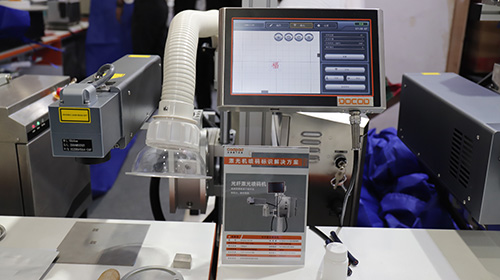Over the years, many laser marking enthusiasts have compared CO2 and fiber laser systems. A common assertion ascribed to this comparison is that the fiber laser is better than the CO2 laser due to its popularity. However, each marking technology has unique specifications that determine whether they are the best for certain applications. This article will compare both laser markers and how you can select the right one.

Fiber laser marking machines uses a laser diode as a pump source. When electricity flows, photons of light enter the fiber optic cable. The cable (lasing medium) uses rare earth elements such as Ytterbium as the doping material, which causes the excitement and releasement of photons or light.
Below are a few reasons you should consider a fiber laser marking machine:
◆ They don’t need constant maintenance, which reduces the maintenance cost.
◆ They have faster-marking speeds
◆ They have a wide material compatibility
◆ They don’t consume too much power.
Although having several advantages, fiber lasers have a few disadvantages:
◆ They are unsuitable for marking thick non-metal materials
◆ Fiber lasers are not optimized for organic materials.
CO2 laser markers produce invisible lasers in the far infrared light spectrum range and are applicable in marking organic materials.

Below are a few reasons you should consider a CO2 laser marking machine:
◆ CO2 lasers are suitable for organic materials.
◆ They are more versatile.
◆ It has a lower initial investment cost
◆ They are more suitable for thicker non-metal materials.
Although having several advantages, CO2 lasers have a few disadvantages:
◆ It has a high level of operating costs
◆ It has to be frequently maintained if water cooling type machine, and the maintenance cost is high.
◆ CO2 laser is not suitable for marking metal materials.
Since we’ve got an idea of what the two laser machines entail, let’s compare them so you can know which to choose.
On the one hand, CO2 lasers use a lasing medium comprising carbon dioxide, nitrogen, hydrogen, and helium to produce the laser beams. On the other hand, fiber lasers use a doped fiber optic as a lasing medium to generate the laser beam. The degree of strength of the laser beam depends on the coating process, the energy source, and how long the optical fiber is.
A CO2 laser can accomplish around 10-15% photoelectric energy conversion. Thus, the cost of operation of the marking machine will rise. In addition, CO2 lasers require a separate cooling device to cool down the test tubes, adding to the increment in power consumption.
A fiber laser can accomplish about 35-50% power effectiveness. As a result, a 100W fiber laser machine will only require 200–250W of power. This means that fiber lasers are more efficient when compared to CO2 lasers.
Their wavelengths are both in the infrared spectrum, which is invisible to the human eye.
CO2 lasers have a wavelength of about 10,600 nm. As a result, they are not advisable for marking highly reflective metal materials. On the other hand, fiber lasers have a shorter wavelength compared to CO2 lasers, which gives them the ability to mark different types of metal materials.
CO2 lasers are generally slow due to their unfocused laser beams and long wavelength. As a result, they have a higher power consumption. In comparison, fiber lasers are faster due to their shorter wavelengths. However, CO2 lasers are faster in marking thicker materials.
Most CO2 lasers use a complicated system of mirrors and lenses to focus the laser beams. Furthermore, a CO2 test tube is also somewhat visible to the outside world. On the other hand, fiber lasers use optical fibers as their main support. Unlike CO2 lasers, it transmits the laser beams more efficient. Furthermore, the optical fibers are well-sealed, preventing exposure to the outer environment.
No matter how perfect the marking machine is, it will break down with time. High-powered CO2 laser marking machines can survive for 2 years. On the other hand, fiber laser marking machines have a lifespan of 3 times longer.
There is a big difference in the investment needed by CO2 and fiber lasers. CO2 lasers are cheaper than fiber lasers, but it will need CO2 laser tube as consumables.
Fiber Laser is no consumables but machine price is a little higher than CO2 laser.
CO2 lasers can mark organic materials like wood, plastics, polyester films, matte boards, etc. On the other hand, fiber lasers can mark many materials, most of which are metals such as nickel, gold, and silver.
The final question you would need an answer is whether you should buy CO2 or fiber laser markers. The answer depends on your business operations. For example, CO2 lasers are better for thick and organic materials. However, for metals, fiber lasers are better. Do you need a fiber or CO2 laser marker? Check through our catalog or contact us.
Copyright © Docod Precision Group Co., Ltd. All Rights Reserved | Sitemap 粤ICP备19111939号